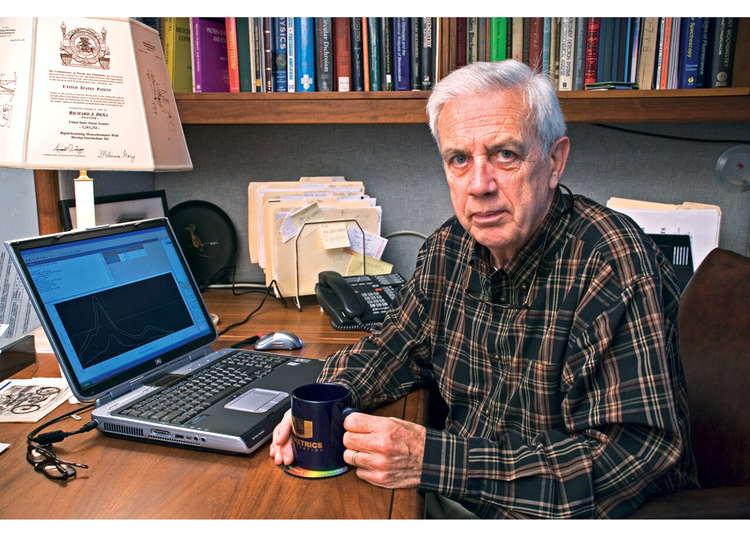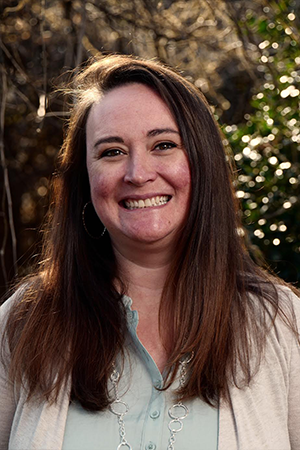The 6-Second Trick For Circular Dichroism
The 6-Second Trick For Circular Dichroism
Blog Article
A Biased View of Circular Dichroism
Table of ContentsThe Single Strategy To Use For SpectrophotometersSome Ideas on Uv/vis You Need To KnowWhat Does Circularly Polarized Luminescence Mean?Not known Facts About Circularly Polarized LuminescenceSpectrophotometers Can Be Fun For AnyoneUv/vis/nir for BeginnersOur Circular Dichroism DiariesMore About SpectrophotometersGetting My Circularly Polarized Luminescence To WorkThe Only Guide to Circular DichroismSome Ideas on Circular Dichroism You Should KnowThe Main Principles Of Circular Dichroism The Ultimate Guide To Uv/vis/nir
It is then scanned through the sample and the reference options. Portions of the event wavelengths are transmitted through, or shown from, the sample and the referral. The resultant light strikes the photodetector gadget, which compares the relative intensity of the 2 beams. Electronic circuits convert the relative currents into linear transmission percentages and/or absorbance/concentration worths.The transmission of a reference compound is set as a baseline (datum) value, so the transmission of all other substances are recorded relative to the preliminary "zeroed" substance. The spectrophotometer then transforms the transmission ratio into 'absorbency', the concentration of specific elements of the test sample relative to the initial compound.
Considering that samples in these applications are not easily available in big amounts, they are particularly matched to being analyzed in this non-destructive strategy. In addition, precious sample can be conserved by using a micro-volume platform where just 1u, L of sample is needed for total analyses. A brief explanation of the procedure of spectrophotometry includes comparing the absorbency of a blank sample that does not consist of a colored substance to a sample which contains a colored substance.
Spectrophotometers Things To Know Before You Get This
In biochemical experiments, a chemical and/or physical home is selected and the treatment that is used specifies to that home in order to derive more info about the sample, such as the amount, pureness, enzyme activity, etc. Spectrophotometry can be used for a variety of techniques such as determining ideal wavelength absorbance of samples, figuring out optimum p, H for absorbance of samples, figuring out concentrations of unknown samples, and figuring out the p, Ka of different samples.: 21119 Spectrophotometry is likewise a handy procedure for protein purification and can also be used as a technique to produce optical assays of a compound.
It is possible to understand the concentrations of a two element mix using the absorption spectra of the basic options of each element. To do this, it is essential to know the termination coefficient of this mixture at 2 wave lengths and the termination coefficients of solutions that consist of the known weights of the 2 parts.

The Main Principles Of Uv/vis/nir
Most spectrophotometers are used in the UV and visible areas of the spectrum, and some of these instruments also operate into the near-infrared Area. The concentration of a protein can be estimated by measuring the OD at 280 nm due to the presence of tryptophan, tyrosine and phenylalanine (https://us.enrollbusiness.com/BusinessProfile/6552779/Olis%20Clarity).
This technique needs a spectrophotometer capable of determining in the UV region with quartz cuvettes.: 135 Ultraviolet-visible (UV-vis) spectroscopy includes energy levels that excite electronic transitions. Absorption of UV-vis light delights molecules that are in ground-states to their excited-states.
These curves can be utilized to check a new batch of colorant to examine if it makes a match to requirements, e
Traditional visible standard spectrophotometers can not detect if identify colorant or the base material has product. This can make it hard to handle color concerns if for example one or more of the printing inks is fluorescent. There are 2 significant setups for visual spectrum spectrophotometers, d/8 (round) and 0/45.
Researchers utilize this instrument to measure the amount of compounds in a sample. If the substance is more focused more light will be taken in by the sample; within little ranges, the Beer, Lambert law holds and the absorbance between samples differ with concentration linearly. When it comes to printing measurements 2 alternative settings are typically used- without/with uv filter to manage better the effect of uv brighteners within the paper stock.
Not known Facts About Circular Dichroism
Some applications require small volume measurements which can be performed with micro-volume platforms. As explained in the applications area, spectrophotometry can be utilized in both qualitative and quantitative analysis of DNA, RNA, and proteins. Qualitative analysis can be used and spectrophotometers are used to tape-record spectra of substances by scanning broad wavelength areas to determine the absorbance properties (the intensity of the color) of the substance at each wavelength.

Fascination About Uv/vis
One major aspect is the kind of photosensors that are offered for different spectral regions, but infrared measurement is likewise challenging because practically everything produces IR as thermal radiation, particularly at wavelengths beyond about 5 m. Another complication is that numerous products such as glass and plastic soak up infrared, making it incompatible as an optical medium.
Retrieved Dec 23, 2018. Essential Lab Approaches for Biochemistry and Biotechnology (2nd ed.). The important guide to analytical chemistry.
Chichester, NY: Wiley. pp. 1617. ISBN 9780471974123. OCLC 36543293. Ninfa AJ, Ballou DP (2004 ). Basic laboratory approaches for biochemistry and biotechnology. Hoboken: Wiley. p. 66. ISBN 9781891786006. OCLC 633862582. Rendina G (1976 ). Philadelphia, PA: W. B. Saunders Business. pp. 46-55. ISBN 0721675506. OCLC 147990. Oke, J. B.; Gunn, J. E.
Examine This Report about Spectrophotometers
"Secondary basic stars for absolute spectrophotometry". The Astrophysical Journal. 266: 713. Bibcode:1983 Ap, J..266..713 O. doi:10. 1086/160817. Ishani, G (2006 ). "The very first industrial UV-vis spectrophotometer". p. 100. Obtained Dec 23, 2018. Simoni, RD; Hill, RL; Vaughan, M; Tabor, H (Dec 5, 2003). "A Classic Instrument: The Beckman DU Spectrophotometer and Its Developer, Arnold O.
278 (49 ): e1. doi:. ISSN 1083-351X. Beckman, A. O.; Gallaway, W. S.; Kaye, W.; Ulrich, W. F. (March 1977). "History of spectrophotometry at Beckman Instruments, Inc". Analytical Chemistry. 49 (3 ): 280A300A. doi:10. 1021/ac50011a001. "Hewlett Packard: Substance Recognition with HP 8450 A UV Visible Spectrophotometer". Analytical Chemistry. 51 (12 ): 1188A1189A. 1979-10-01.
1021/ac50048a728. ISSN0003-2700. Ninfa AJ, Ballou DP, Benore M (2015 ). Fundamental Lab Approaches for Biochemistry and Biotechnology (3, rev. ed.). Hoboken, NJ: Wiley & Sons. p. 77. ISBN9780470924525. OCLC915641828. "Totally Automatic Double Beam - Atomic Absorption Spectrophotometer (AA 8000)". Laboratory Devices. Labindia Analytical Instruments Pvt. Ltd. "Spectrophotometry Applications and Principles".
A Biased View of Uv/vis
Obtained Jul 4, 2018. Trumbo, Toni A.; Schultz, Emeric; Borland, Michael G.; Pugh, Michael Eugene (April 27, 2013). "Applied Spectrophotometry: Analysis of a Biochemical Mixture". Biochemistry and Molecular Biology Education. 41 (4 ): 24250. doi:10. 1002/bmb. 20694. PMID 23625877. (PDF). www. mt.com. Mettler-Toledo AG, Analytical. 2016. Retrieved Dec 23, 2018. Cortez, C.; Szepaniuk, A.; Gomes da Silva, L.
"Checking Out Proteins Filtration Strategies Animations as Tools for the Biochemistry Teaching". Journal of Biochemistry Education. 8 (2 ): 12. doi:. Garrett RH, Grisham CM (2013 ). Biochemistry. Belmont, CA: Cengage. p. 106. ISBN 978-1133106296. OCLC 801650341. Vacation, Ensor Roslyn (May 27, 1936). "Spectrophotometry of proteins". Biochemical Journal. 30 (10 ): 17951803. doi:10. 1042/bj0301795.
PMID 16746224. Hermannsson, Ptur G.; Vannahme, Christoph; Smith, Cameron L. C.; Srensen, Kristian T.; Kristensen, Anders (2015 ). "Refractive index dispersion sensing using a range of photonic crystal resonant reflectors". Applied Physics Letters. 107 (6 ): 061101. Bibcode:2015 Ap, Ph, L. 107f1101H. doi:10. 1063/1. 4928548. S2CID 62897708. Mavrodineanu R, Schultz JI, Menis O, eds.
Not known Incorrect Statements About Uv/vis/nir
U.S. Department of Commerce National Bureau of Standards unique publication; 378. Washington, D.C.: U.S. National Bureau of Standards. p. 2. OCLC 920079.
The procedure begins with a regulated light source that brightens the examined sample. In the case of reflection, as this light interacts with the sample, some is soaked up or discharged. The released light journeys to the detector, which is analyzed, measured, and presented as industry-standard color scales and indices.
Industry governing bodies usually specify specific metrics for particular products, such as Tomato and Coffee indices. The streamlined mathematics appears like this: Where R is the reflection coefficient. All terms are examined over the noticeable spectrum from 400 to 700 nm. In the case of transmission, when the light communicates with the sample, it is either taken in, reflected, or transmitted.
Fascination About Circular Dichroism
Examples include APHA (American Public Health Association) for watercolor and pureness analysis, ASTM D1500 for petrochemical color analysis, edible oil indices used in food, and color analyses of beverages. All terms are examined over the visible spectrum from 400 to 700 nm.
Image Credit: Matej Kastelic/ Dr. Arnold J. Beckman and his coworkers at the National Technologies Laboratories initially invented the spectrophotometer in 1940. In 1935 Beckman established the company, and the discovery of the spectrophotometer was their most ground-breaking creation.
5 Simple Techniques For Circularly Polarized Luminescence
99% precision. In time, scientists kept improving the spectrophotometer design to improve its performance. For example, the Find Out More UV capabilities of the design B spectrophotometer were improved by changing the glass prism with a quartz prism. Ultimately, the Model DU was produced, including a hydrogen lamp and other improvements. This instrument was utilized in commercial laboratories, clinics, and chemistry and biochemistry departments.
After 1984, double-beam variations of the gadget were developed. The addition of external software application with the provision of onscreen display screens of the spectra came in the 1990s. Usually, a spectrophotometer is made up of 2 instruments, specifically, a spectrometer and a photometer. A standard spectrophotometer includes a light source, a monochromator, a collimator for straight light beam transmission, a cuvette to put a sample, and a photoelectric detector.
Rumored Buzz on Uv/vis/nir
There are various types of spectrophotometers in numerous shapes and sizes, each with its own function or functionality. A spectrophotometer identifies just how much light is shown by chemical elements. spectrophotometers. It measures the difference in light strength based upon the overall amount of light presented to a sample and the amount of beam that goes through the sample solution
As per the instrument's design, the sample is positioned in between the spectrometer and the photometer. After the light is travelled through the sample, the photometer determines its intensity and shows the reading. A spectrophotometer is used to determine the concentration of both colorless and colored solutes in a service. This instrument is utilized to determine the rate of a reaction.
Report this page